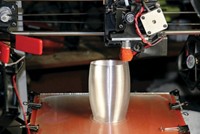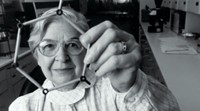Advertisement
Grab your lab coat. Let's get started
Welcome!
Welcome!
Create an account below to get 6 C&EN articles per month, receive newsletters and more - all free.
It seems this is your first time logging in online. Please enter the following information to continue.
As an ACS member you automatically get access to this site. All we need is few more details to create your reading experience.
Not you? Sign in with a different account.
Not you? Sign in with a different account.
ERROR 1
ERROR 1
ERROR 2
ERROR 2
ERROR 2
ERROR 2
ERROR 2
Password and Confirm password must match.
If you have an ACS member number, please enter it here so we can link this account to your membership. (optional)
ERROR 2
ACS values your privacy. By submitting your information, you are gaining access to C&EN and subscribing to our weekly newsletter. We use the information you provide to make your reading experience better, and we will never sell your data to third party members.
Business
C&EN CENTENNIAL
From the archives: The 1970s
A mysterious new product is unveiled in C&EN
by Alexander H. Tullo
August 27, 2023
| A version of this story appeared in
Volume 101, Issue 28

In 1970, C&EN published a news article on two new “tire fibers” that DuPont had introduced at a recent Akron Rubber Group meeting. They were so new that they weren’t even given trademarks yet but were code-named Fiber A and Fiber B. Fiber A had a higher melting point than nylon 6,6 and was suitable for car and truck tires. Fiber B, DuPont executive John W. Hannell boasted, had “far greater strength and modulus as well as better dimensional stability than any other organic fiber available.” That fiber, the company predicted, could even be used in airplane and off-road tires. But Fiber B had a brighter future ahead of it than just tire cord. DuPont would soon give Fiber B one of the most recognizable trademarks in all chemistry: Kevlar. The p-aramid fiber took off in applications like aerospace, cables, personal protective equipment, and of course, bullet-resistant body armor. Kevlar was made possible by DuPont chemist Stephanie Kwolek’s groundbreaking work in aromatic polyamides. In 1964, Kwolek was tasked by DuPont to come up with new high-performance fibers. She worked out a synthesis for high-molecular-weight poly(p-aminobenzamide). The resulting solution was cloudy, not clear or translucent, and had a low viscosity—both odd properties for a polymer solution. What Kwolek didn’t realize at that moment was that she had created a liquid-crystal solution. Spun into a fiber, the material had exceptional properties. This work led to poly(p-phenyleneterephthalamide), which would bear the Kevlar name.





Join the conversation
Contact the reporter
Submit a Letter to the Editor for publication
Engage with us on Twitter